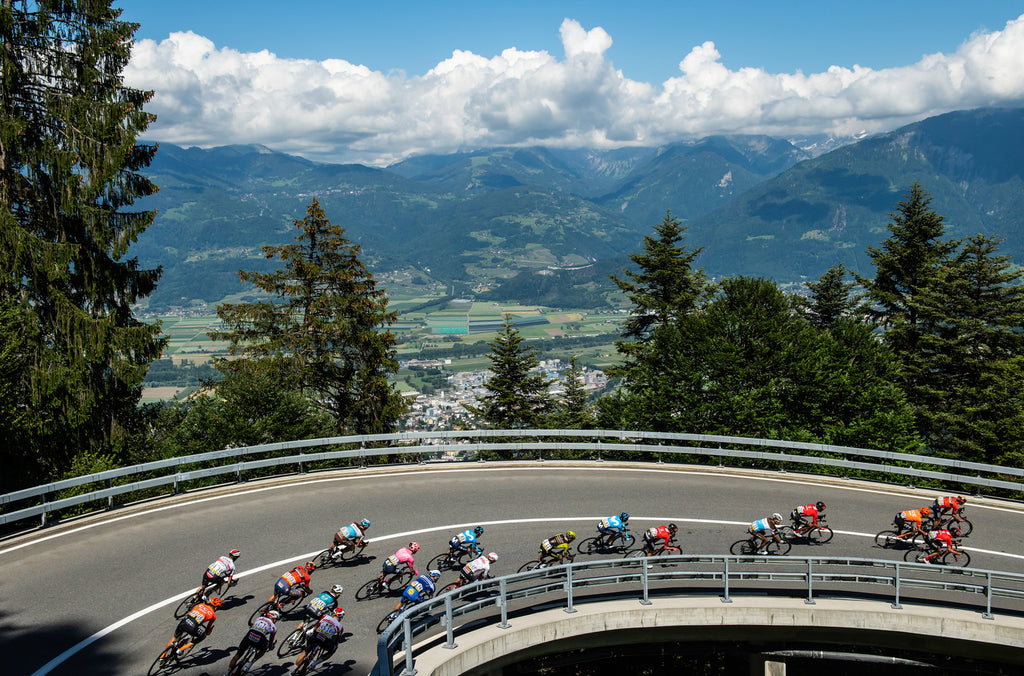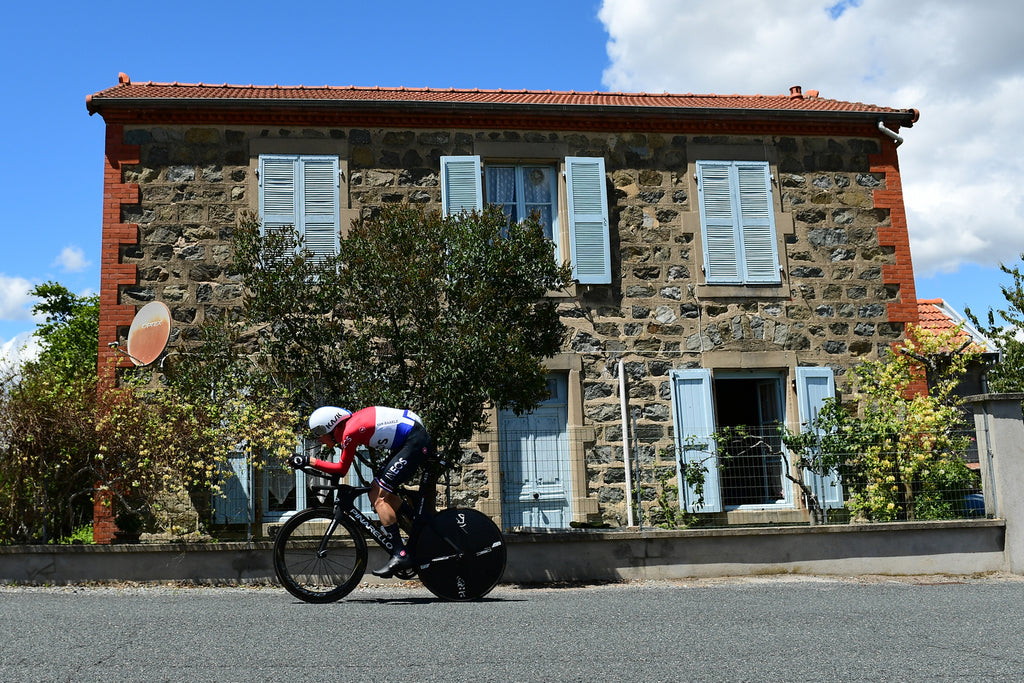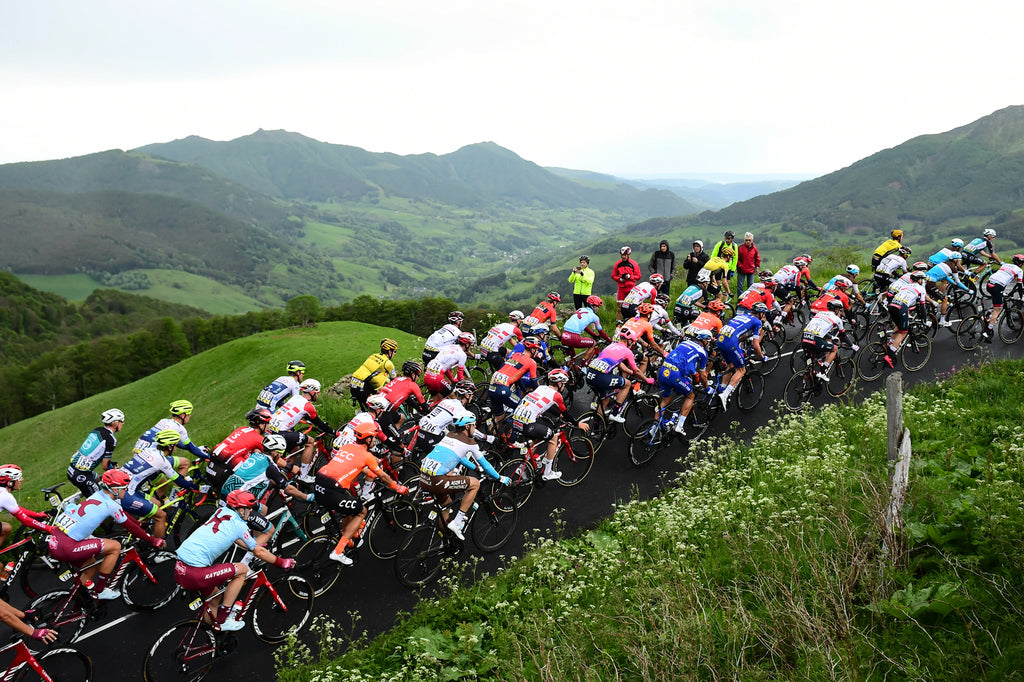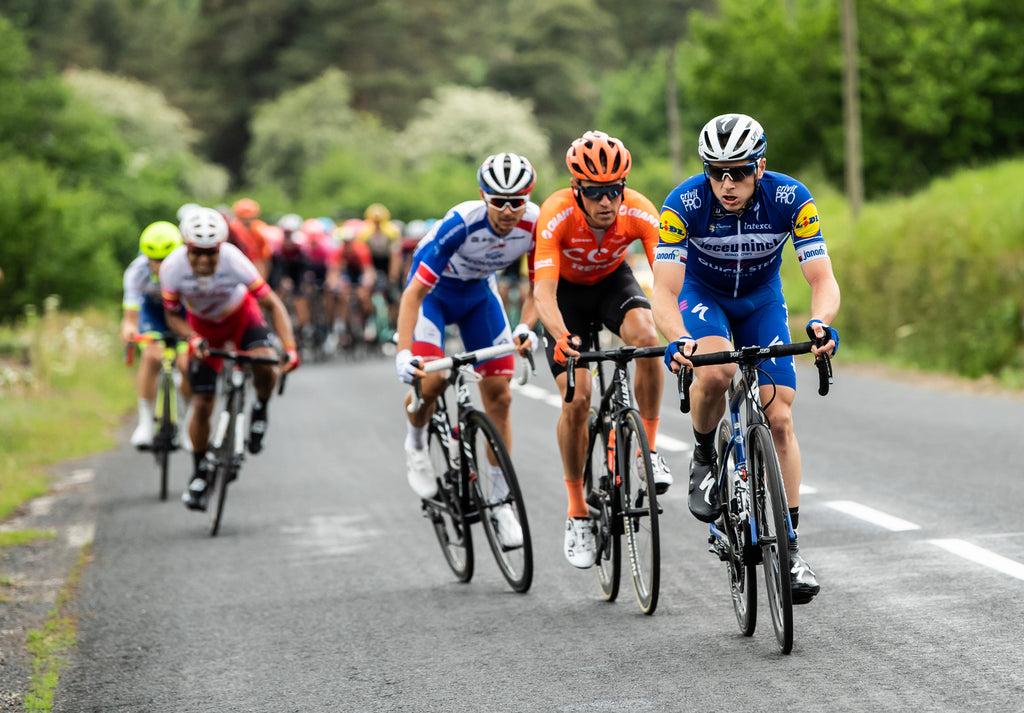Words: Paul Maunder | Photos: Marshall Kappel / ASO
8 minute read
I was fast. Seriously fast. I had a yellow Peugeot jersey, black woolly shorts and perforated leather shoes.
Admittedly, I’d had to strap an embarrassing handlebar bag onto my bike, but overall I felt and looked good. I was ten years old and riding on the roads of my heroes. The côtes and cols of the Isère region may have been mere foothills to the professionals, but for me they embodied everything I dreamed about. I’d seen enough coverage of the Tour de France to know how you ride up these hills, how to swoop through the hairpins and blast through sleepy villages.
I was enjoying myself, though there was quite a lot of downtime. The agreement with my parents was that I would wait at the top of each hill, or at a junction. So for all my sprinting through sets of hairpins (ten year-olds have world-class power-to-weight ratios), I had to spend 20 minutes at the top waiting for my mother on her Dawes Galaxy touring bike, and my father, who had given himself the masochistic challenge of riding around the Isère on a tandem that weighed more than a nuclear submarine. He did have a stoker on the back, but she was seven years old and, being more interested in ballet than cycling, spent as much time as she could with her feet perched on the crossbar.
I enjoyed those interludes, waiting astride my bike, in the middle of the French wilderness. The sun beat down, the verges buzzed with early summer life. Occasionally one of those vans that are unique to France – battered, grey, cute – would chug past and its driver, equally battered and grey, would peer at my jersey. Often I’d get a nod, or a raised finger, and that bolstered my opinion that I was, one day, going to win the Tour de France.
At the top of a climb, I noticed a page of a newspaper, yellowed, abandoned and blown into the ditch beside the road. There was a large photo of a Renault-Elf jersey. I jumped off my bike and into the ditch; pored over the photo and the adjacent text. The fact that I didn’t speak a word of French became, for the first time in my life but not the last, acutely problematic. I folded the newspaper page and tucked it inside my jersey.
There then followed a general regrouping of the family peloton before a headlong plunge down to the valley. A junction. Merde (okay, I knew some words). I stopped again. The wait after descents wasn’t so long because the gravitational forces acting upon the tandem, combined with its near-useless brakes, meant that my father had little choice but to take the descents at speed. It was also a good opportunity to take revenge on my soft-tapping sister. She always looked terrified at the bottom. My mother held the rather strange perspective that downhills were a good opportunity to look at the view, so she brought up the rear.
Rolling once more, I found more newspaper pages blowing across the road. I stopped, retrieved them and showed them to my father.
 “Look! 71, Eric Caritoux, Sean Kelly!”
“Look! 71, Eric Caritoux, Sean Kelly!”
“Must be a race on,” he replied sagely.
Our combined linguistic skills couldn’t decipher any of the articles, so I pocketed the pages and we carried on our way.
As I write this, on a flight headed for Geneva, it occurs to me that my parents may have known all along that the following day we were going to happen across one of professional cycling’s most intriguing and stylish events, the Dauphiné Libéré. If they did plan it in advance, they certainly made a good job of feigning surprise when we walked into the market square of a small town, looking for croissants and chocolat chaud, and discovered the Village Départ.
I was in heaven. Here were all the team cars – Skil, La Redoute, Panasonic, Kwantum, Renault. Rows of glittering beautiful bikes. The breathless narrative of the race announcer over the loudspeakers. For me, the only thing more evocative of a bike race than a French announcer is the sound of the musical horns they still fit in team cars. I stumbled from vehicle to vehicle, in a state of euphoric awe. My bedroom walls were lined with cut-out photos of these riders. And here they were, just lounging about in their team cars, fiddling with their kit, joking amongst themselves. They were real. And yet they glowed with the aura of the supernatural.
The Café de Colombia team, home to the gifted Lucho Herrera, sat in a line on a kerb, drinking espressos. An obligation by their sponsors, I thought; this was long before my own caffeine addiction took hold. My father focused on more technical matters, shaking his head in amazement as he watched a mechanic strip down the gears on a blue Gitane.

At the Skil car we found Sean Kelly sitting in the passenger seat with the door open.
“Long one today Sean?” ventured my father.
“No, not really. 180km.”
“Christ,” muttered my father, genuinely disturbed by the answer. Perhaps he was thinking about doing 180km on the tandem.
Emboldened by our first exchange with a supernatural being, we went off in search of other English-speaking riders. Phil Anderson beamed as he had a photo taken with me. 41 was quietly charming. As I squared up to have my photo taken with 71, I told him that I wanted to be a pro when I grew up.
“That’s what I said,” he smiled back, “and look what happened to me.”
Thirty-one years later I’m back at the Dauphiné. It’s now called the Critérium du Dauphiné, and it’s run by ASO, but it’s the same race. And it’s become the race of choice for the preparation of Tour de France favourites.
“It’s important because it’s the last big test before the Tour,” Nicolas Roche, Stephen’s son, told me as he lined up for stage one. “It’s well-positioned geographically; it does a lot of the climbs we’ll do in the Tour.”

The race’s timing is impeccable too – in early June there is still time to make some last-minute tweaks to one’s form. Time too, to recover. And perhaps there is simply something about the spirit of the race which attracts the teams. It runs on French roads, the official cars look like Tour de France official Skodas, Bernard Hinault is there on the podium to introduce you to the local dignitaries.
For Ag2r-La Mondiale directeur sportif, Vincent Lavenu, who rode the Dauphiné in 1983 during his neo-pro season, the race has a special place in his affections.
“It’s the race of my childhood. As a boy, I went every day on the side of the road, in Briançon where I was born. I remember seeing Merckx, Poulidor, Ocaña. One of my first memories was seeing a German rider crash in front of me. He broke his ankle and retired. During my first participation in 1983 I performed well, but I had a very bad crash and had to quit. As a directeur sportif, the final victory of Vinokourov [in 1999] is a very emotional moment in my career. I love this race, in my mountains, often passing through Briançon, my hometown, and Chambéry and the Savoie region where I live now. It’s one of the most beautiful races in the world.”
For an experienced watcher of cycling, there’s the added attraction of the Dauphiné’s mind-games. Certainly bike races are complicated enough, but here we have the added element of pretending to have poor form to mislead one’s opponents. Identifying pre-Tour sandbagging is not easy, and ultimately only validated four weeks later. The alternative approach to the Dauphiné – if you have the legs – is to demonstrate one’s strength and make your rivals fearful, as Bradley Wiggins did in 2011 and ’12.

We’re in Ugine for Stage 1. It’s a dazzling Alpine morning. The overnight thunderstorms have cleared and left the valley pastures refreshed. The cowbells are tinkling, the peaks are still snow-streaked, and the world’s best cyclists are getting dressed in the car park of a cement works. It’s not the quaint market square of my memory, but a bike race can make any location exciting.
Is the experience any different? Well, yes and no. The biggest physical change is the presence of the team buses. They act like huge brand statements. They’re not exactly penis substitutes, but they are team substitutes, in the sense that they are supposed to intimidate. Our bus is indestructible. Our bus is an expression of our technological advancement. And the buses have changed the behaviour of the riders. Now they stay on board for as long as possible before the race starts. This is entirely understandable, but not great for fans or journalists.
I wander from team to team, ogling the rows of bikes, watching the mechanics and the soigneurs work.
With an air of reluctance the riders emerge at the last possible minute, grab their bikes and freewheel down to the signing-on stage. The biggest teams appear last. All the riders are immaculately turned out, as you’d expect. The principal difference between now and 1984 are the accessories. Baseball caps, sunglasses, headphones and mobile phones are all in evidence. Part of the uniform for a modern pro. They help the riders to hide, from the public and from journalists like me. Professional cyclists affect a nonchalance that is quite unsettling until you get used to it.

Nevertheless, as they roll up to the start line, it’s not hard to detect differences in the way they’re feeling. The older riders are relaxed, smiling, shaking hands. The younger riders look tense. Are they nervous? Places on the team for the Tour are up for grabs. A poor performance this week could be career-damaging.
Now the child-like excitement has been replaced by something deeper. It’s not awe or admiration I’m feeling. It’s something more like a paternal instinct. I’m old enough to be a father to some of these riders. The youngest rider on the race is Tiesj Benoot, at 21. Nicolas Roche was born in early July 1984, which means that he was getting ready to make an appearance as his father joked with a ten year-old English boy before the start of a Dauphiné stage.
I have two young children, and I think about whether I would want them to become elite athletes. I want to tell these young riders that there is more to life than cycling, that ambitions are simple when you’re young, and failure is complex when you’re old. These years could be the most vivid of their entire lives, and there’s a kind of sadness in that.

Ever since that day in France in 1984, I’ve loved watching bike races. I still feel that same excitement, whilst of course trying to look as nonchalant as possible. Journalists want to look cool too.
Cycling has changed in the intervening years. It’s become more professional, more scientific, more media-savvy. It has discovered its conscience about doping. But the thrill of seeing it up close is unchanged. There’s still the feeling of a summer fête. At the Dauphiné you can talk to your heroes, touch the bikes on the team cars, and send your children over to the team bus to get a free bidon. In July, none of the teams will be this relaxed.
Next June, I think I’ll book a family holiday in the Haute-Savoie. It’s a lovely part of the world. Perhaps we could do a little cycling; these days you can hire carbon fibre tandems with hydraulic disc brakes. My wife and children will love it. I might not tell them there’s a bike race on.
This article was originally published in issue 56 of Rouleur.
The post Paper Trail: Or How I Learned to Love the Dauphiné appeared first on The world's finest cycling magazine.































